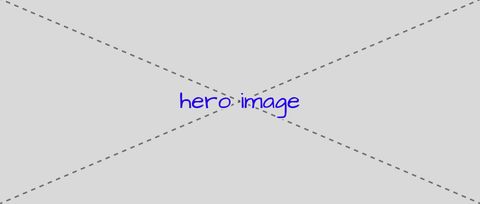Don’t worry if it doesn’t make sense right away: this version is
completely backwards compatible, and we have at least a year before
anything will be deprecated from the old way of doing things.
During that transition period:
- There are built-in features to help library authors take advantage
of the new syntax without deprecating the old.
- Stylesheet authors can use the new syntax, even if they rely on
libraries that haven’t upgraded.
- There is an automated Migration Tool that can help all of us
upgrade more smoothly.
I’ll be posting a more in-depth article to CSS-Tricks on Monday, but I
wanted to get a quick primer out right away.
Update: the full article is now live at CSS-Tricks
What are modules, and why?
One of the most popular Sass features is the ability to split your CSS
code into multiple smaller files, and then merge them back together into
a single (often minified) CSS document for the browser.
As our projects get bigger, that becomes even more important – but the
relationships between files can also get blurry or confusing. We might
see a variable, and not know where it was defined, then search through
our files and find several definitions. We might want to use an outside
library like Accoutrement, but it includes a color() function, and
we already have one, so the two would conflict.
Modules are meant to clarify those relationships, both for us as
developers and for the compiler. Every file is a “module”, and
everything in that module is explicitly defined – including
dependencies.
In my old Sass projects, I could do something like this:
$font-path: '../fonts/';
@import 'accoutrement/sass/tools';
@import 'fonts';
@import 'type';
@import 'layout';
In a module system, that will no longer work each file that we import
would become available inside app-styles.scss, but they would have no
access to each other or to the variables (like $font-path) that are
defined locally. If Accoutrement needs access to the $font-path, then
we’ll have to make that relationship clear. If _fonts.scss needs
access to Accoutrement, we also need to make that clear.
By making it all explicit, we’re not just adding boilerplate – we’re
making it possible to look at a single file and know:
- Exactly what other files are required
- Exactly where variables, mixins, and functions are coming from
- If we add variables, mixins, or functions, we only have to worry
about their name being unique in this one file
Replacing @import with @use & @forward
Sass @import is built on top of CSS @import – it does the same
things, and then some more things. That distinction isn’t always clear
to users. I have to look it up every time. For example, if we
@import 'fonts.css', Sass will treat it as a CSS import and do nothing
–but if we @import 'fonts' (no extension), Sass will happily import
the file just like any other Scss.
Over the next few years, Sass features of @import will be removed
entirely. We’re giving that syntax back to CSS, and building modules
with an entirely new syntax. During the transition, the two syntaxes
will work together smoothly:
- you can
@import a file written with @use/@forward syntax
- you can
@use or @forward a file written with @import syntax
While they work together, I highly recommend learning the new system,
and using it for new code.
@use modules where you need them
Since the module system is all about explicit naming (and namespacing)
of dependencies, We’ll often need one or more @use statements at the
top of Sass documents. If we want access to Accoutrement in a file, we
can @use Accoutrement:
@use 'accoutrement/sass/tools';
Like @import, that makes Accoutrement tools available in our file!
Unlike @import…
- Accoutrement will not be passed along to other files that we
@use
after it
- Accoutrement will not be passed along when this file is imported,
used, or forwarded in another place
- By default, Accoutrement “members” (variables, mixins, and
functions) are namespaced
Manage namespaces when using
A “namespace” works like a prefix. The default namespace is based on the
end of the import path, so accoutrement/sass/tools will create a
tools namespace. Namespaced “members” can be accessed with that prefix
separated by a period: <namespace>.$variable,
<namespace>.function(), or <namespace>.mixin():
@use 'accoutrement/sass/tools';
@include tools.animate('fade-in');
html { color: tools.color('brand-primary'); }
$my-font-url: tools.$font-path + 'my-font.woff2';
We can change that namespace by adding as <name> to the @use
statement:
@use 'accoutrement/sass/tools' as amt;
@include amt.animate('fade-in');
We can even use as * to make external members available without a
namespace – but I don’t recommend it very often. Namespaces are a good
thing.
(Note that as * does not make members “global” in a project-wide
sense, it just removes the local namespace.)
@forward modules to combine them
I’ll often group small Sass files together in a directory like
layout/, and then merge them all together in a file called
layout/_index.scss – so I can import them all at once:
@import 'banner';
@import 'nav';
@import 'main';
@import 'footer';
@import 'layout';
The new module system has a special syntax for that: passing along other
files as though they are all part of one module.
@forward 'banner';
@forward 'nav';
@forward 'main';
@forward 'footer';
@use 'layout';
Configure modules once
Since Accoutrement (in our example) has no access to local variables, we
need a way to explicitly configure the library before we @use it. In
brief, module configuration looks like this:
@use 'accoutrement/sass/tools' with (
$font-path: '../fonts/',
);
It’s like a Sass map, but with $ on all the key names to make it clear
they are variables.
This is where things can get the most confusing, because
- A module can only be configured once
- Configuration has to happen the very first time you
@use a module
This will take some getting used to, and can be difficult to debug – but
there are a few patterns you can use. Either put configurations at the
very top of your “entrypoint” (the main file that imports everything
else), or combine @use with @forward to create a wrapper around the
configured library, and forward the results with optional extensions:
@use 'accoutrement/sass/tools' with (
$font-path: '../fonts/',
);
@forward 'accoutrement/sass/tools';
Now Accoutrement has been used and configured and forwarded all in one
place. In all our other files, we can @use 'tools' to access the
fully-configured Accoutrement without any danger of duplicate or
out-of-order configurations:
@use 'tools';
@use 'tools';
So much more…
There is much more to cover – from Sass core modules (e.g.
@use 'sass:math') to import-only files, public and private members,
the load-css() mixin, and so on. I cover all of that in the article
for CSS-Tricks.
If you want to get a head start, the amazing new documentation has a
lot of helpful detail, and Natalie has posted an overview on the Sass
Blog. I’ve also created a library called Cascading Color Systems, and
a new website for Teacup Gorilla that both use the module system. Both
projects are very much under construction, but feel free to dig around.
Check back soon for more details – and if you have questions, feel free
to reach out.



